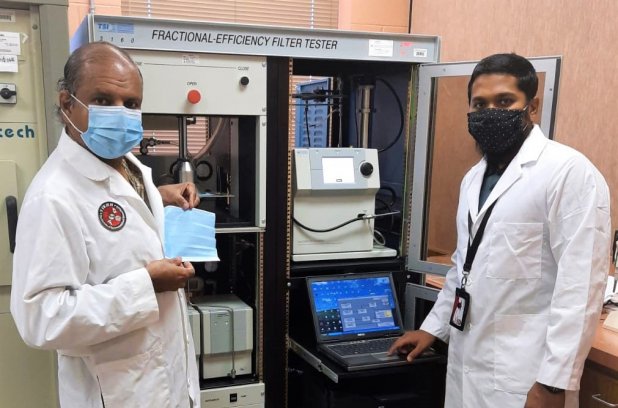
Nanotubes from discarded facemasks
Tests show that three-ply face masks can filter out 60-80% of simulated viral particles between 150 and 30 nanometres in diameter.

2nd August 2021
Innovation in Textiles
|
Texas, USA
On July 27th, the US Centers for Disease Control and Prevention (CDC) issued new mask guidelines, recommending that Americans resume wearing masks indoors in areas with high coronavirus transmission, regardless of vaccination status.
While vaccinations reduce the risk of Covid-19 transmission, it is still possible for vaccinated individuals to spread the Delta variant to those who are unvaccinated.
Seshadri Ramkumar, professor of chemical countermeasures and advanced materials at Texas Tech University’s Department of Environmental Toxicology, has gathered data on the effectiveness of facemasks in reducing the spread of Covid-19.
“In areas where coronavirus variants are surging, it’s in our best interests to protect the people surrounding us who aren’t vaccinated – those who cannot be vaccinated for medical reasons or those for whom vaccinations are not yet approved,” he said. “It’s in the public’s best interest, for the safety of others, to voluntarily follow the guidelines established by the CDC.”
The fractional efficiency filter tester housed at Texas Tech’s Institute of Environmental and Human Health (TIEHH) measures a material’s ability to filter out particles. Using this instrument, Ramkumar’s team has demonstrated that three-ply masks filter out 60-80% of simulated viral particles between 150 and 30 nanometres in diameter.
Ramkumar is also working on enhancing the filtration efficiency of cotton face masks – research that is especially important in light of the recent emergence of the Delta variant, which carries two-to-three times more viral loads per droplet than the original coronavirus strain and poses a much higher risk of infection.
In an article published last year, Ramkumar explained that an efficient filter requires ‘the three Fs’ – filtration, fit and form (comfort). The ideal facemask has a high filtration capacity, fits securely against the face without gaps and is comfortable enough to wear for long periods.
Ramkumar classifies facemasks according to four different categories – filtration facepiece respirators (FFRs, or N95 masks), surgical masks, face covers, and face covers with enhanced filtration (FISORS).
Together with vaccinations, facemasks are effective tools in combating coronavirus infection rates. While last Tuesday’s CDC announcement is a recommendation and not a mandate, Ramkumar’s research demonstrates the life-saving potential of wider facemask usage.

Business intelligence for the fibre, textiles and apparel industries: technologies, innovations, markets, investments, trade policy, sourcing, strategy...
Find out more